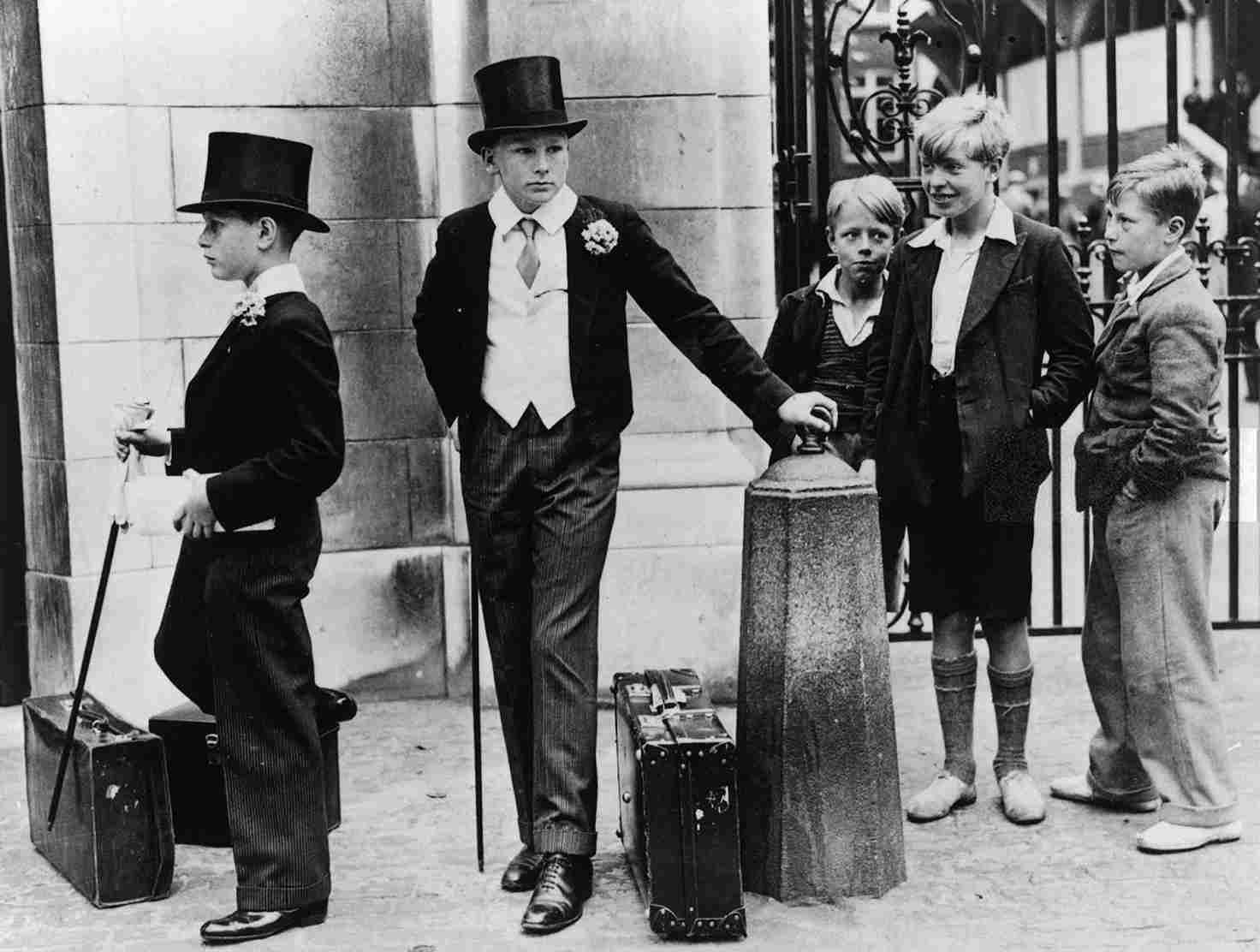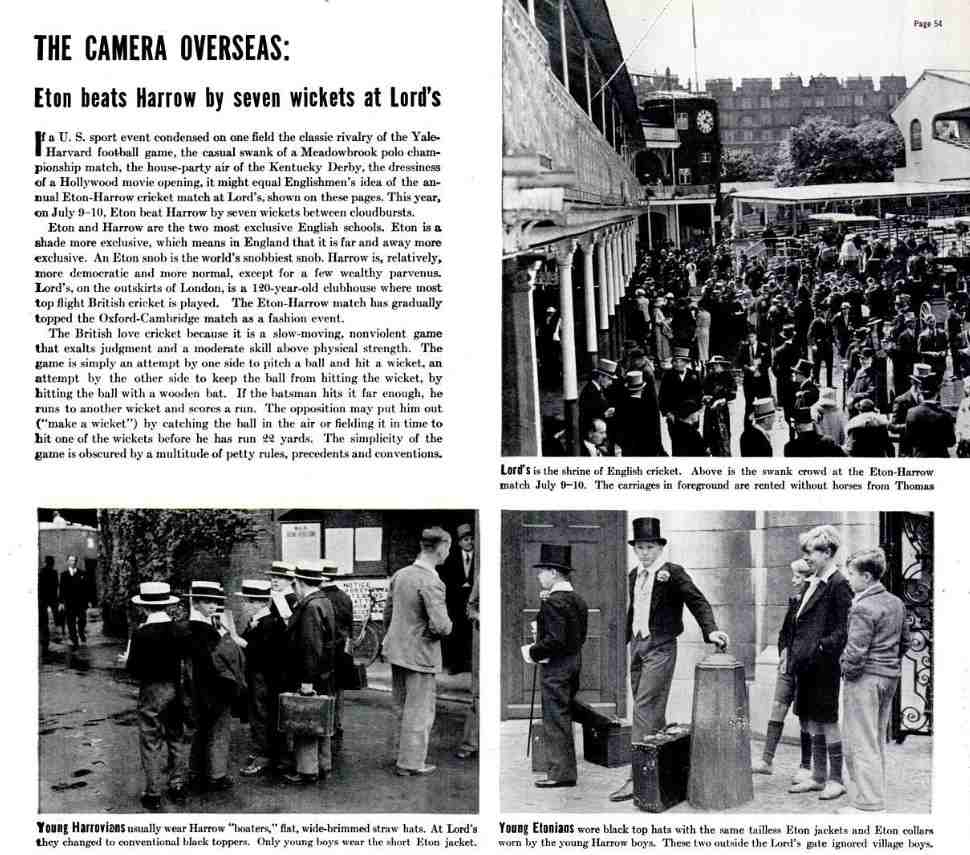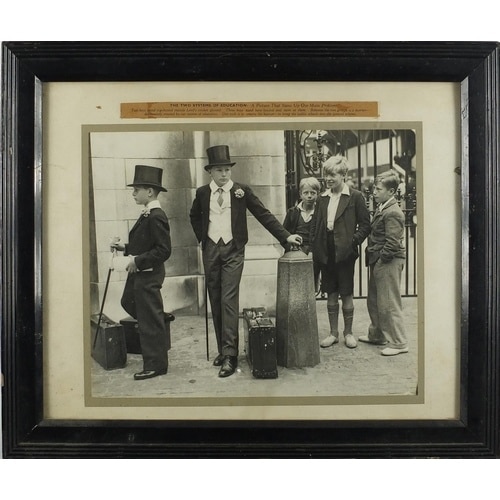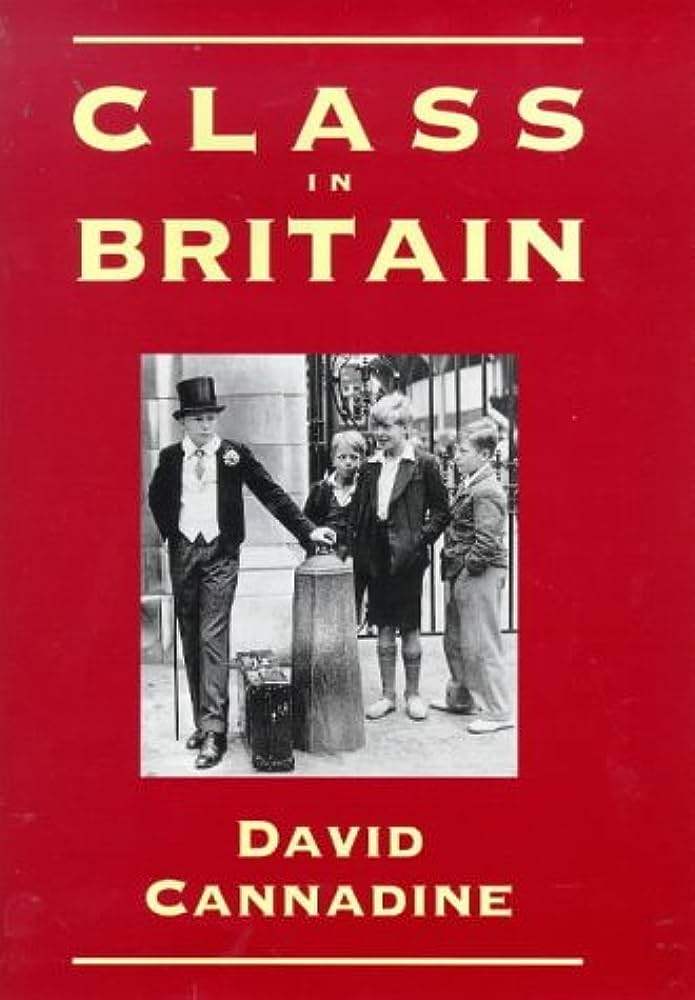The Photo Toffs vs. Toughs That Exposed Britain’s Social Divide In 1937
The photo titled “Toffs and Toughs” became famous for its stark depiction of the differences between the upper class (“toffs”) and the working class (“toughs”) in pre-war Britain.
Two young boys, impeccably dressed in formal attire with top hats, canes, and smart suits, embody the upper class. Their polished appearance and confident posture exude wealth and privilege.
In sharp contrast, three other boys dressed in casual, worn clothing represent the working class. They appeared sloppier and more relaxed.
The difference in their clothing, posture, and expressions underscores the profound social and economic disparities between the classes during that period in Britain.
What happened to the boys later? It would be interesting to find out the story behind this photograph.
The making of the photo

The picture was taken by Jimmy Sime on 9 July 1937 outside the Grace Gates at Lord’s Cricket Ground during the Eton vs Harrow cricket match. It has been reproduced frequently as an illustration of the British class system.
In the photo, the well-dressed Harrovians are Peter Wagner and Thomas “Tim” Dyson. They were arranged to be at Grace Gates at 2 pm, where Wagner’s father would pick them up and drive them to Russ Hill, the Wagners’ country home in Surrey, for the weekend.
On the right, the other three boys are George Salmon, Jack Catlin, and George Young. They were 13-year-old students from a local Church of England primary school.

After visiting the dentist in the morning, they decided to skip school and hang out at Lord’s. They hoped to make some money by opening taxi doors and carrying bags for people attending the cricket match.
The News Chronicle published the photo the next day on its front page under the headline “Every picture tells a story,” with a simple caption noting the event and location.
According to Peter Wagner’s sister, the Wagner family initially found the photo amusing because the boys looked so fed up. However, over time, she felt that the picture became known for the wrong reasons.
The fate of each boy

Tim Dyson, the rich boy staring toward the camera, has the saddest story among them. A year after the photo was taken, his parents arranged for him to join them in Trimulgherry, India, for the summer holidays.
During the trip, Tim fell seriously ill and was diagnosed with diphtheria. Tragically, he died on August 26, 1938, at just 16 years old. His father later died in a Korean prison camp during World War II, four years after losing his only child.
Peter Wagner, the other well-dressed boy in the photo, entered the family stockbroking firm, married, and had three daughters.
Unfortunately, he became mentally unstable in the 1970s, so he spent his final years in Hellingly Hospital. He passed away in that hospital in 1984 at the age of 60.

George Young and George Salmon, two of the boys on the right, led relatively stable lives. Both were married by the time they were interviewed in 1998.
Young started a window-cleaning business and involved his four sons in the trade. Salmon continued to live in Marylebone until his death in 2000.
Jack Catlin, the third boy, moved with his family to Rickmansworth shortly after the photo was taken. He remarried after being widowed and lived in Weymouth until his death in January 2011 at the age of 85, survived by his wife Shelia, his son, daughter, and grandchildren.

Unlike Wagner and Dyson, these three men reached old age and seemed to find contentment in their later years. However, Catlin did not maintain contact with Salmon and Young.
When a newspaper requested the three men to reunite for a photo at Lord’s, Catlin refused. He likely did not want to be stereotyped as a poor London boy, having made a successful life for himself and feeling no nostalgia for his pre-war childhood streets.

